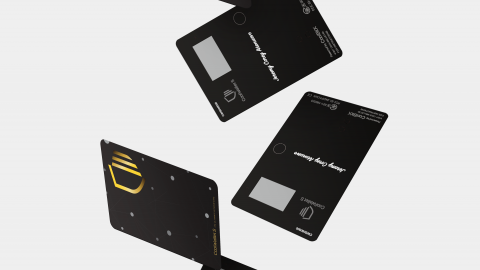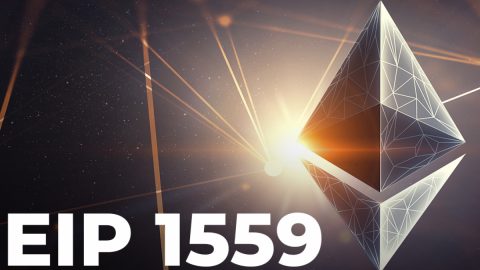Introduction
One of the hottest narratives and trends predicted last year to drive this year’s crypto bull run is the interesting and potentially economy-reshaping sector of DePIN, or Decentralized Physical Infrastructure. It resides at the intersection where Web3, blockchain networks and other tech fields like artificial intelligence (AI) meet real-life hardware that make it possible for them to scale to every home and device on the planet.
Let’s dig into DePIN!
What is DePIN?
DePIN is the decentralization of physical infrastructure networks as the name denotes. Much like IoT (Internet of Things) technology, it connects physical resources to a network where users can access, share, and monitor many kinds of technological resources, and the number of connected devices and ecosystems is growing rapidly. The key feature is the decentralization aspect. Through blockchain and Web3 technology, the spare technological capacity around us, should we choose to connect it, can be shared and streamlined without using centralized platforms or giving corporate and government gatekeepers control, through the use of smart contract-powered chains like Ethereum, Solana and even Bitcoin.
DePIN has some of the characteristics of crowdsourcing platforms such as AirBnB and Uber. However, instead of being governed from a central network of corporate servers, it uses blockchain technology to pool the resources of individuals together. These individuals can share and profit from infrastructure capacity they may have to offer.
Common examples include hard drive space or computing power but can also include just about any valuable resource that can be stored or represented on a blockchain. Contributors then have their contributions measured, tracked, and sold at a fair price to users who can benefit. This is all transacted in a market that is open, democratic, and free from corporate profit motives.
Rewards
On centralized corporate crowdsourcing platforms, the platform provider incentivizes their infrastructure providers (AirBnB apartment owners, etc.) with fiat currency. The company retains control of most aspects of the business and is motivated to keep a significant percentage of the potential profits of the resource provider. Through DePIN protocols and platforms, providers of resources are incentivized with cryptocurrency rewards. Users and providers alike benefit and it can be run very efficiently. The platforms get tested in the marketplace and the ones that prove to be the most stable, secure, fairly priced, and easy to use gain their deserved market share.
Big Tech vs. DePIN
Facebook, Google, Amazon, and their big-tech ilk amass a great deal of data from their users but don’t offer those users much more than the use of their ad-laden platforms. As corporations, they will continually squeeze more data out of customers and sell it to the highest bidders in the quest for ever-higher profits. DePIN has the power to keep prices fair and rein in the profit motive while still delivering powerful incentives for those powering and maintaining the decentralized infrastructure.
Infrastructure Types
DePIN can be used to manage the pooling and sharing of almost any kind of resource that can be electronically linked. Some of these resources are native to the digital world and others are “digitalized” in some manner. These resources can be categorized as physical or digital.
1) Physical Resource Networks (PRNs)
These are resources that are pooled together and networked but are still attached to physical locations. They include computer hardware resources as well as commodified services such as digital mobile bandwidth, energy, and many others. The future use cases are innumerable.
2) Digital Resource Networks (DRNs)
Digital resources are natively digital and include computing power and data storage. DePIN has been most developed in these areas thus far, and there are examples of projects that have been active since before the term DePIN was coined as a label, such as Filecoin, which kicked off in 2017.
Inside DePIN
DePIN Protocols
For DePIN to function, protocols have been developed to enable communication between all the hardware linked together on networks. Incentives are built in to keep growing the pool of available resources and to make sure providers are adequately compensated (or penalized in some cases). Ideally, this will lead to an infrastructure provider and user base that can continue to scale up and be self-sustaining.
DePIN Crypto Tokens
DePIN network incentives are dispersed in the form of tokens on blockchains that host DePIN projects. The tokens can be bought and sold like other tokens on the open crypto market. Some DePIN protocols may have two different tokens, one to be spent (or “burned”) to purchase the DePIN resources, and another as payment to the infrastructure providers. Others may have a system using the same token on both ends of the user-provider arrangement.
The DePIN Flywheel
In a report by Messari Research, they describe the DePIN flywheel, which elegantly depicts the virtuous cycle that is born out of the DePIN ecosystem. All components of DePIN work together synergistically through incentives and benefits delivered to infrastructure providers and users alike. This attracts new founders, developers, users, and infrastructure providers as platforms become more innovative and efficient.
The Messari report identified six key industries for DePIN to flourish in:
- Compute
- Wireless
- Sensors
- Energy
- Services
- AI
DePIN vs. Traditional Physical Networks
DePIN differentiates itself from standard physical networks through its decentralized, crypto-driven incentive structure. This approach is crucial for building a resilient physical infrastructure, leveraging on-chain settlements to enhance decentralized robustness, crowdsourced funding, and innovation. Unlike traditional networks that struggle with multi-currency transactions and lack privacy, DePIN’s use of cryptocurrencies simplifies settlements and upholds decentralization and privacy.
Key Advantages of DePIN
Messari highlights four main advantages of DePIN over traditional infrastructure.
- First, DePIN utilizes crowdsourcing for capital, offering easier access and fair token rewards, in contrast to the high initial capital required by traditional networks.
- Second, its on-chain ledger system streamlines international payments and maintains transparency, reducing overhead costs.
- Third, DePIN eliminates the single points of failure inherent in centralized networks, enhancing reliability.
- Lastly, DePIN encourages technological innovation and risk-taking, a stark contrast to the often stagnant nature of traditional network development.
What Are the Benefits of Decentralized Physical Infrastructure Networks (DePIN)?
Immense Scalability
Blockchain technology has proven its scalability over the last decade as adoption of the technology has ramped up and DePIN is a direct beneficiary. Capacity can be easily brought online to expand the pool of available resources in DePIN projects. Participants can scale the allocation of their resources up or down efficiently, thereby maximizing their resources without concern that those resources will be tied up and unavailable when they need them, but penalties may be incurred if the providers fail to live up to their end of the deal to provide the infrastructure they agreed they would.
Security
DePIN systems bring with them transparency, security, and accountability. Operating on a decentralized blockchain means that there is no single point of failure, and systems can keep running normally, even when irregularities occur. Blockchain cryptography ensures data integrity and authentication, keeping the DePIN ecosystem flywheel strong.
Fair Pricing
Through DePIN, users have a better set of choices when it comes to getting value for their purchasing power. Big Tech will find it difficult to compete and keep shareholders happy when DePIN can offer the same services, only with the added advantages of lower prices and decentralization. As an example, Akash offers DePIN compute services at a rate much lower than that of Google or Amazon. Filecoin also beats Google and other big cloud storage providers on price.

DELIVERED EVERY WEEK
Subscribe to our Top Crypto News weekly newsletter
What are the Hottest DePIN Sectors for 2024?
Mapping
Projects such as Hivemapper are collecting large amounts of geospatial data thanks to a worldwide network of drivers using specialized dashcams. Street-level imagery is collected from the dashcams and made available to customers in competition with mapping services offered by the big centralized tech companies.
Cell Phone Data
Projects are being developed such as the GIANT protocol which allows smaller players to package eSIM cell phone data packages and sell them to the public, thanks to DePIN. There is massive potential here, especially for countries where the cell phone market is monopolistic and ripe for disruption.
Health Data
Healthcare is another area where data can be collected and monetized anonymously through DePIN. More and more people are carrying sensors with them in the form of health trackers or fitness monitors, and the data generated, when collected en masse, are worth something. Projects such as Health Blocks are monetizing this through DePIN. These data are valuable to researchers and companies developing products to improve the well-being and longevity of citizens. Many people appreciate the opportunity to opt in to have their data uploaded anonymously for research purposes in exchange for currency.
Electricity
The electricity grids of the future will vary tremendously by geographic location depending on a large number of factors. Spare capacity in one place can be shared in another, and DePIN is a great way to manage this. Got solar panels? Share your excess power via DePIN. Does your jurisdiction have excess hydroelectric power? Get that shared on a DePIN network. The Green Power Network offers this type of service and the potential benefits to society are tremendous.
Bandwidth Networks
Decentralized bandwidth networks have been established to deliver media content and compete with the likes of YouTube or Rumble. They deliver content on bandwidth crowdsourced via DePIN. One such example is the Theta Network. The THETA token is used for transactions and incentives to keep the system running well. Users get on board to receive ad-free multimedia content at low cost. And in terms of performance vis a vis YouTube and the like, the more users Theta accrues, the better the quality of the streaming media experience.
Looking Beyond 2024: What’s Next for DePIN?
The future looks bright for DePIN, with the number of protocols and projects increasing at a steady rate. More individuals and organizations are getting excited as they learn about how they can benefit while contributing to decentralization in the spirit of Web3. What crowdsourcing did for vacation apartment rentals and transportation, DePIN can do for those and many other sectors. The possibilities are immense, and it has the potential to be a major driver of Web3 and blockchain technology more generally.
Challenges Ahead
It’s still early days, but things move fast in tech, especially in the crypto universe. DePIN protocols and their associated blockchains and projects are likely to run into a few snags along the way. Crypto market volatility as well as public sentiment will be factors for how well the DePIN flywheel gains and maintains momentum. Another concern is the security of smart contracts and potential vulnerability to hacks. That’s not a new theme in crypto and DePIN needs to be airtight if it is to continue on its upward path.
Profitability
The incentives for participants to provide their physical infrastructure are the main drivers of DePIN to keep it active and growing. Projects that get the platforms, incentives, and distribution right will be the ones that survive and thrive. The pricing of the DePIN offerings for users will also be part of a new market, a market that will find its footing as the advantages of these decentralized offerings become more widely known.



